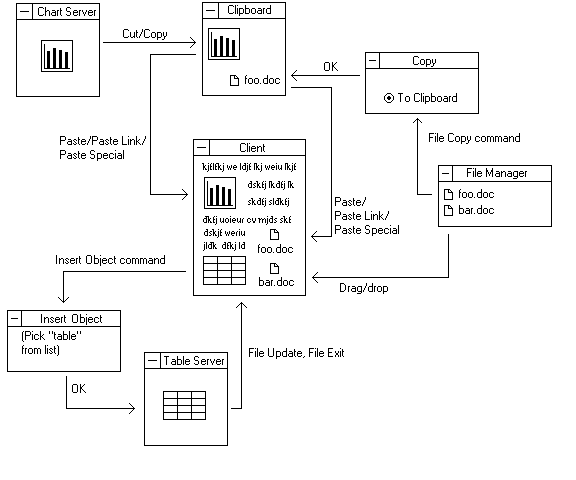
An application that uses OLE can cooperate with other OLE applications to produce a document containing different kinds of data, all of which can be easily manipulated by the user. The user editing such a document is able to improve the document by using the best features of many different applications. An application that implements OLE gives its users the ability to move away from an application-centered view of computing and toward a document-centered view. In application-centered computing, the tool used to complete a task is often a single application; whereas, in document-centered computing, a user can combine the advantages of many tools to complete a job.
A document that uses linked and embedded objects can contain many kinds of data in many different formats; such a document is called a compound document. A compound document uses the facilities of different OLE applications to manipulate the different kinds of data it displays. Any kind of data format can be incorporated into a compound document; with little or no extra code, OLE applications can even support data formats that have not yet been invented. The user working with a compound document does not need to know which data formats are compatible with one another or how to find and start any applications that created the data. Whenever a user chooses to work with part of a compound document, the application responsible for that part of the document starts automatically.
For example, a compound document could be a brochure that included text, charts, ranges of cells in a spreadsheet, and illustrations. The information could be embedded in the document, or the document could contain links to certain information instead of containing the information itself. The user working with the brochure could automatically switch between the applications that produced its components.
The following illustration shows the relationships between a compound document and its linked and embedded objects.
